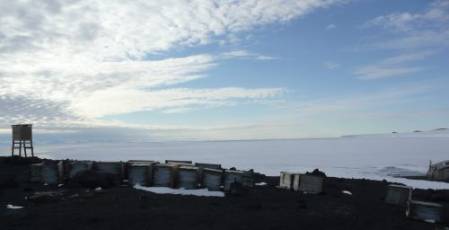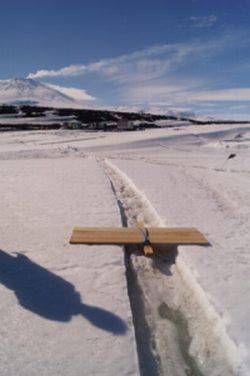Author: Lizzie
Date: 29 January 2013
Temperature: -5.5C
Wind Speed: 11 knots
Sunrise: N/A
Sunset: N/A
The summer team and I have recently arrived back at Scott Base. Something of a shock to be around so many people once more, but we have dredged up our rusty social skills and have been enjoying catching up with the many science teams and support staff inhabiting the base at this time of year. January at Cape Evans seemed to fly by as we worked hard to complete all the tasks on the work programme. A lot of long days and evening work were put in, but we had the satisfaction of completing the conservation of over 100 wooden and plywood boxes used by the Scott Expedition to store fuel and food. Back in their original locations on the hillside, their ability to withstand the fierce storms of winter has been ensured for the next few decades.
Historic fuel boxes, conserved, Cape Evans
January saw huge changes at the site as the melt season continued. Previous work by the Trust means that meltwater is diverting well away from the hut itself. As these small streams melt the sea they create meltpools in which Adelie penguins and seals became our frequent visitors.
Adelie penguins heading for the meltpools, Cape Evans © AHT/Lizzie
A magical time to be out in the field, and we were all sad to leave. The next blog you read will be courtesy of the incoming winter team who we meet this week at Scott Base to introduce to their season ahead. There are some fantastic artefacts in store for their winter so check back in to see what they are conserving in the months ahead.









